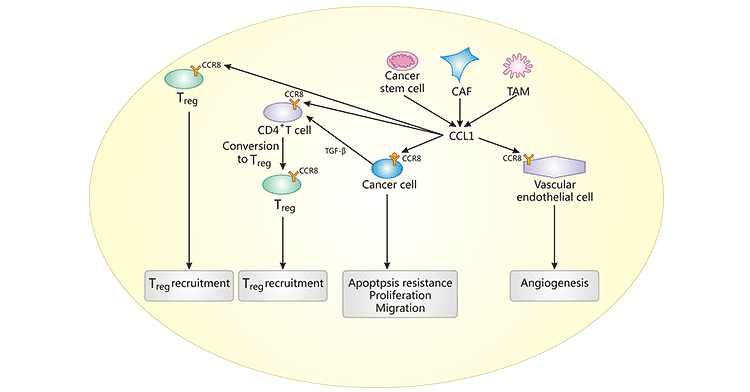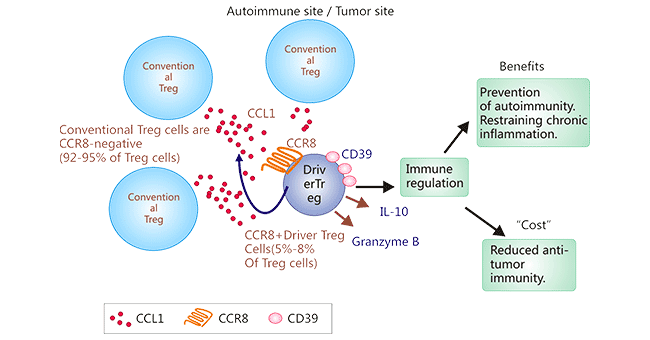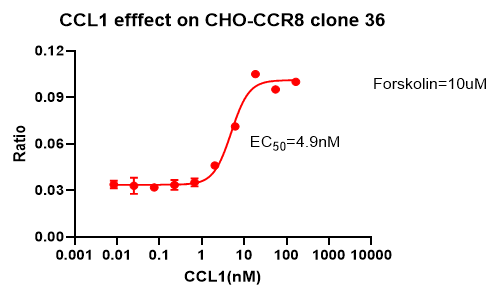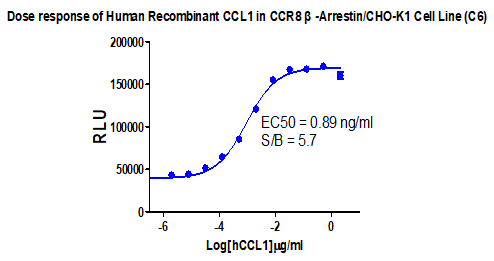CCR8 | Potential blockbuster tumor immunotherapy target
Introduction to CCR8
CCR8 is a member of the chemokine receptor family and is a G protein-coupled receptor. CCL1 is the main ligand of CCR8, and other ligands of CCR8 include CCL8, CCL16 and CCL18. Studies have found that CCR8 is specifically expressed on tumor-infiltrating regulatory T cells (Treg), but also on Th2 cells and tumor cells; however, it is largely not expressed in peripheral blood Treg or normal tissues. The main role of CCR8 is involved in the recruitment of Treg and Th2 cells to inflammatory and tumor sites. A large number of studies have shown that the high expression of CCR8 is related to a variety of cancers, including colorectal cancer, breast cancer, gastric cancer, metastatic brain cancer and metastatic liver cancer, etc. In particular, it has been found that there is high expression on Tregs cells isolated from breast cancer. level of CCR8. Therefore, CCR8 has become a new important tumor immune target that has attracted attention in recent years.
The mechanism of action of CCR8 targets in the TME (tumor microenvironment)
Tregs are a group of specific CD4-positive lymphocytes whose function is to suppress excessive and uncontrolled immune responses. In the tumor microenvironment, Tregs are mainly responsible for suppressing the immune response of immune cells that attack tumors. So what is the role of CCR8-positive Tregs in the TME (tumor microenvironment)? As shown in Fig. 1 below, tumor stem cells CAFs and TAMs secrete CCL1 into the TME (tumor microenvironment), and CCL1 binds and activates CCR8 on a variety of cells.

Fig 1. The mechanism of CCR8 target in TME (tumor microenvironment)
The role of the CCL1-CCR8 activation signal is as follows:
1) In tumor cells, cause tumor cell proliferation, migration and anti-apoptosis;
2) In vascular endothelial cells, promote angiogenesis and tumor growth;
3) In CD4+ T cells, enhance the transformation of CD4+ T cells to Treg and the recruitment of Treg;
4) In Tregs, responsible for recruiting Tregs to inflammatory or tumor sites.
The CCL1-CCR8 signaling pathway not only recruits CCR8+ Tregs to the TME, but also induces up-regulation of FOXP3 and CD39 and IL-10, which are critical for Treg repression (see Fig. 2 below), thus enhancing this process Immunosuppressive capacity of Treg. The study found that CCR8 was found to be significantly upregulated in tumor-infiltrating Tregs in human breast cancer compared to Tregs in normal tissues, suggesting that CCR8 is a very promising tumor-specific therapy for Tregs expressed in the tumor microenvironment target, and is unlikely to elicit a systemic autoimmune response. Therefore, targeting CCR8 to enhance anti-tumor immunity by depleting tumor-infiltrating FOXp3+CCR8+Treg cells or blocking the CCL1/CCR8 pathway has become an important direction for the development of a new generation of tumor immune drugs.

Fig 2. CCL1-CCR8 signaling pathway
Current status of drug development
At present, many pharmaceutical companies at home and abroad have started drug development targeting this target, most of which are monoclonal antibodies targeting CCR8, and there are also a small number of small molecule antagonists targeting this target. BMS' CCR8-targeting monoclonal antibody BMS-986340 is the first CCR8-targeting antibody drug in the world to conduct clinical trials. A phase 1/2 clinical trial of this drug is in progress to evaluate its interaction with O drug The therapeutic effect of combined use on various solid tumors. In addition, Gilead obtained the cooperative development rights of the CCR8-targeting antibody JTX-1811 from Jounce Therapeutics, which has also obtained the FDA's clinical trial license.
For this important new tumor immune target, we have also developed a relevant drug target cell screening model, which can be used to screen the binding ability and activity of macromolecular and small molecule drugs targeting CCR8.
CCR8/CHO RQP71362

Fig 3. CCL1 effect on CHO-CCR8 clone 36.
CCR8/β-Arrestin/CHO RQP71363

Fig 4. Dose response of Human Recombinant CCL1 in CCR8 β-Arrestin/CHO-K1 Cell Line(C6).

